
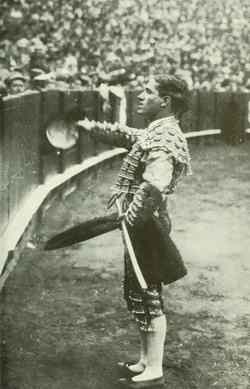
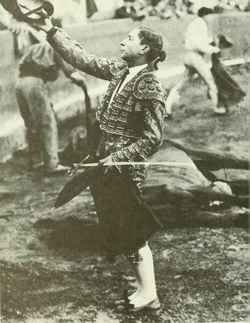
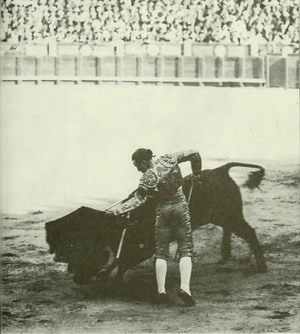
Who could do this
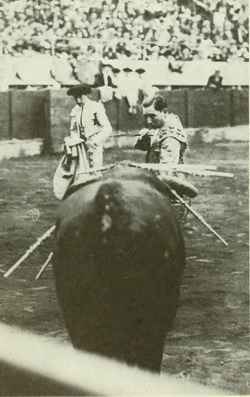
Who hated to kill
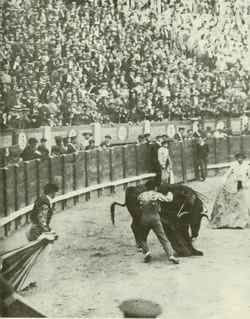
Of the disasters
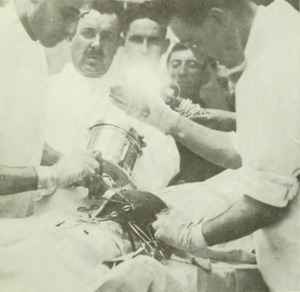
Opening a cornada in the Madrid infirmary
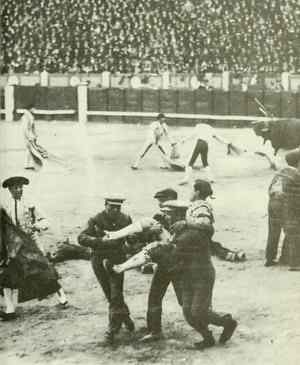
Valencia II, called Chato, with a cornada in the right thigh.

Manuel Granero killed in the Madrid ring
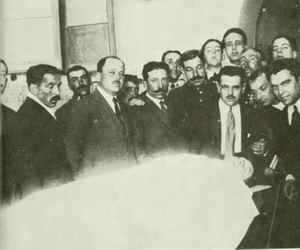
Granero dead in the infirmary. Only two in the crowd are thinking about Granero. The others are all intent on how they will look in the photograph.
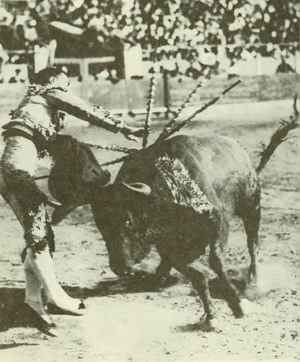
Vicente Pastor killing in the ring at Burgos. The horn has caught him as he put in the sword because the wind has blown the muleta up and toward the man.
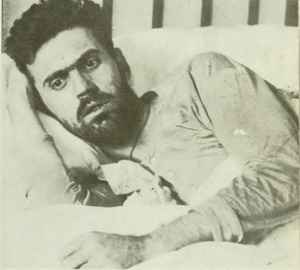
After the corada. Varelito in the hospital
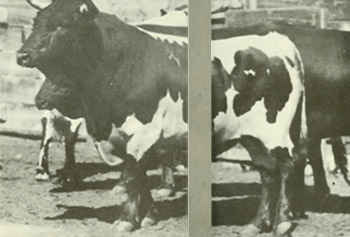
Bull of Vicente Martinez that went alive out of the Madrid ring in 1923 when Chicuelo was unable to kill him.
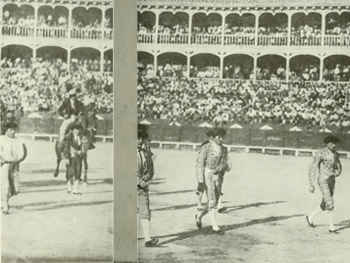
These took his place. Manolo Bienvenida, Domingo Ortega and Marcial Lalanda making the paseo in the ring at Aranjuez. Ortega when this photograph was taken was still an unknown novillero and acted as sobresaliente or substitute matador for the other two.
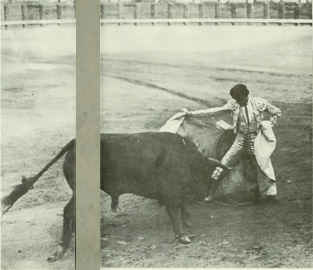
Marcial Lalanda making the quite of the mariposa or butterfly. Moving backward across the ring, the folds of the cape swing lightly. It takes great skill and knowledge of bulls to do properly or at all.

Marcial Lalanda in a cambio de rodillas made when the bull first comes into the ring.
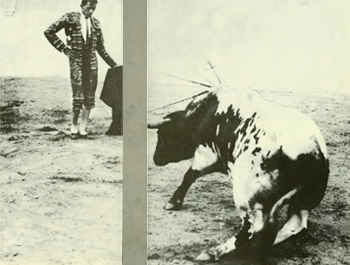
Marcial Lalanda, most scientific and able of present fighters, watching the bull go down after an estocade.
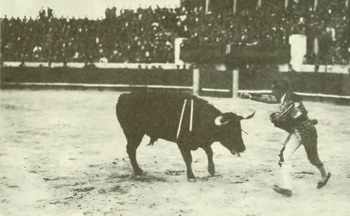
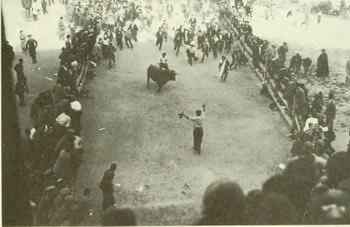
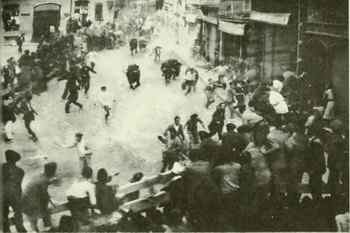

The highly paid Cagancho often kills like this from cowardice while in Navarra amateurs do this for fun.
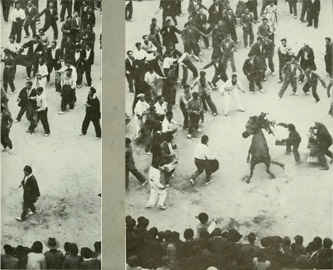
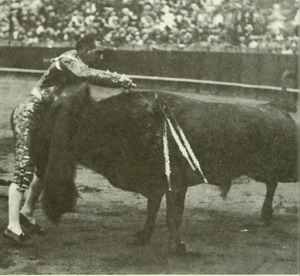
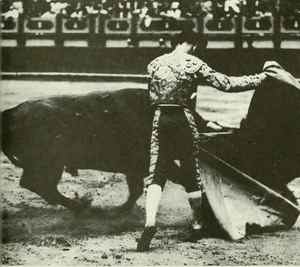
Sidney Franklin killing on the day of his début in Sevilla and below the same Franklin making a veronica in the ring at Cadiz.
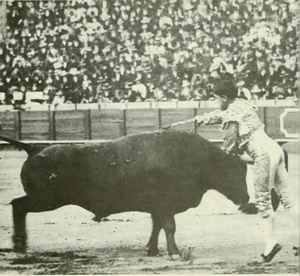
Above, Varelito has gone in over the horn, kept the bull's head down as he crossed with his left hand guiding the bull after the muleta and is coming out with the sword in and the bull already dead from the thrust.

Below, Manolo Bienvenida is coming out before he has ever gone in and is stabbing at the bull in passing without ever bringing his body within range of the horn.

Zurito killing—see how the man's whole body will pass over the horn, the sword seems going in an inch at a time—the bull's front legs are doubling under him.
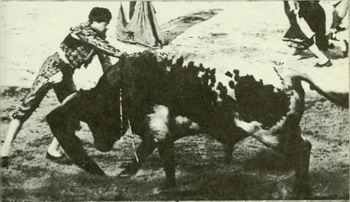
Luis Freg killing—his sword hand tight up against the bull—the bull's eye controlled by the swing of the cloth at the tip of the muleta.
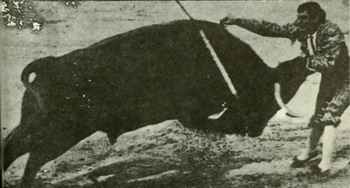
El Espartero killing—both the bull's front legs are off the ground—notice how he is crossing with the left hand.
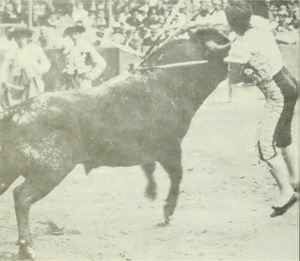
What happens when the bull raises his head from the muleta when the sword is in. The horn is lifting Varelito by the neck. No man going in to kill can be certain the bull may not raise his head from the cloth while the man's body is passing the horn no matter how well controlled the muleta may be. It is this moment that gives the bull his chance at the man and it is when the man avoids this moment that he is said to assassinate the bull rather than to kill him according to rule.
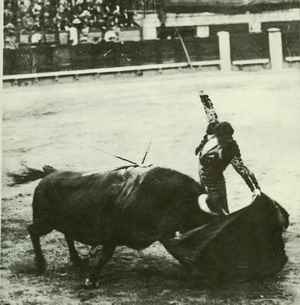
This, for movement, is Felix Rodriguez in a pase natural on a fast charging bull.

This for instruction, with a certain amount of movement still, is a picador ruining a bull by pic-ing him in the ribs instead of placing the pic in the hump of muscle over his neck and shoulders.
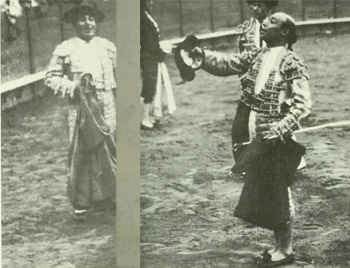
This, to remove all tragedy, is El Gallo, dedicating the last bull of his life as a bullfighter. The story is in the text.
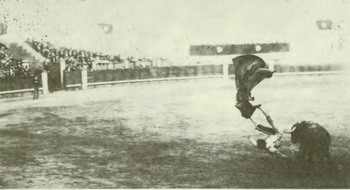
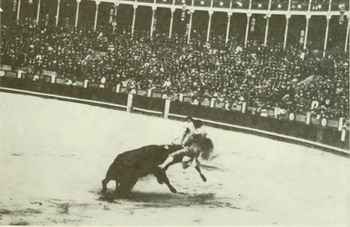
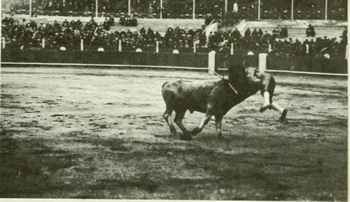
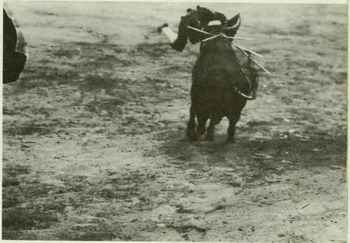
Four of the type of incidents El Gallo avoided so assiduously while fighting bulls for thirty years as a full matador.
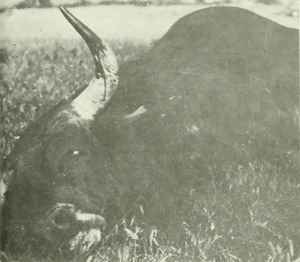
Half-bred bull killed in an amateur fight or capea near Madrid but not without, first, having wet his left horn.
The amateur bullfight is as unorganized as a riot and all results are uncertain, bulls or men may be killed; it is all chance and the temper of the populace. The formal bullfight is a commercial spectacle built on the planned and ordered death of the bull and that is its end. Horses are killed incidentally. Men are killed accidentally and in the case of full matadors, rarely. All are wounded; many of them severely and often. But in a perfect bullfight no men are wounded nor killed and six bulls are put to death in a formal and ordered manner by men who expose themselves to the maximum of danger over which their ability and knowledge will allow them to triumph without casualties. In a perfect bullfight, it may be admitted frankly, some horses will be killed as well as the bulls since the power of the bull will allow him to reach the horse sometimes even though the picadors were completely skillful and honorable— which they are not. But the death of the horses in the ring is an unavoidable accident and affords pleasure to no one connected with or viewing the fight except the bull who derives supreme satisfaction from it. The only practical good the death of the horse gives is in showing the spectator the danger the man is constantly exposed to and keeping him reminded that the spectacle, which the grace and skill of the men engaged in makes him take lightly, or for granted, is one of great physical peril. Writers on the peninsula who tell of the public applauding the death of the horses in the ring are wrong. The public is applauding the force and bravery of the bull which has killed those horses, not their death which is incidental and, to the public, unimportant. The writer is looking at the horses and the public is looking at the bull. It is the lack of understanding of this view-point in the public which has made the bullfight unexplainable to non-Spaniards.